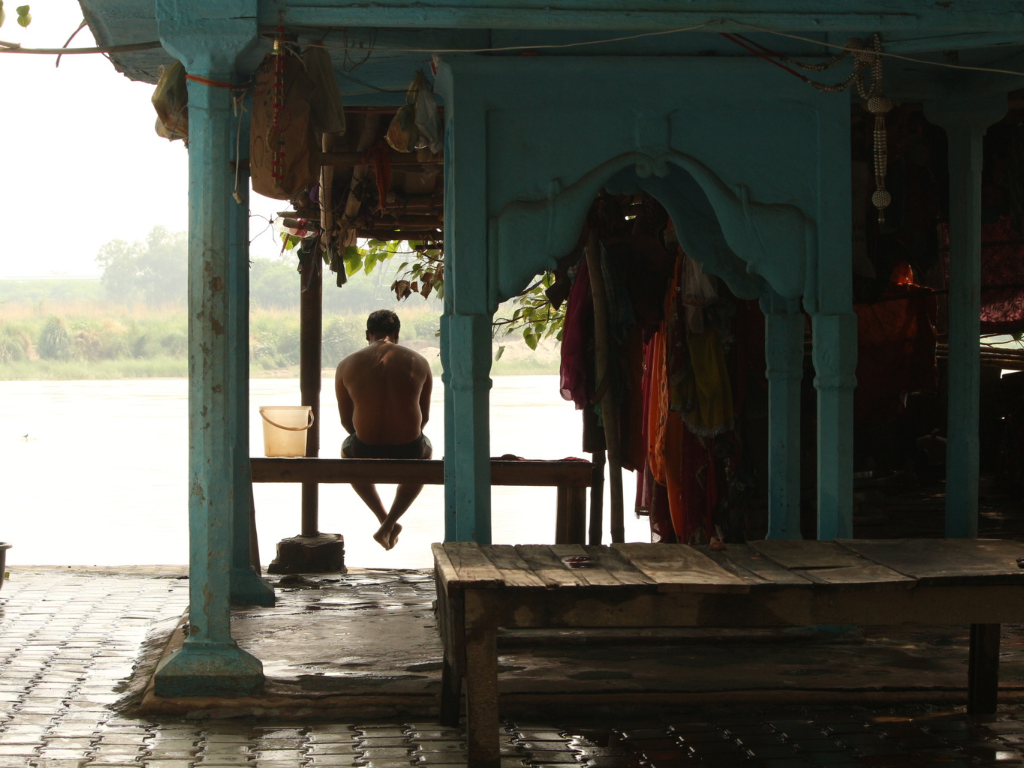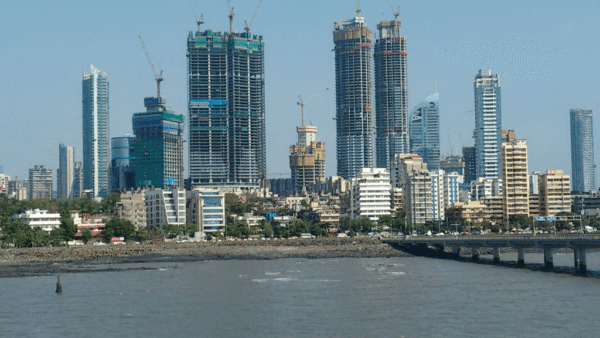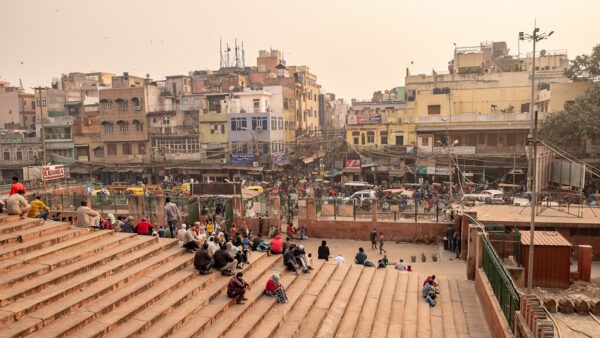Originating from the Yamunotri glacier in Uttarakhand and flowing for nearly 22 kilometres, the Yamuna River winds its way through India’s capital New Delhi. It is the Ganga’s longest tributary and a major water artery of the city. At 1,376 kilometres, it’s also the fifth-longest river system in India. But, in Delhi, it is not the same river as it is before it reaches the city, especially downstream from Wazirabad. It has been dying a slow death.
Walking along the Yamuna, in Delhi, shows the city’s severed, mostly utilitarian, relationship with the river. Only two percent of the Yamuna flows through Delhi but the city is responsible for 76 percent of the river’s pollution.[1] The infamous foam rises on the river and trash like footwear and plastic bags is regularly found on its banks. Delhi dumps around 58 percent of its waste, including largely untreated waste and industrial effluents, into the river.[2] In 1993, the Government of India launched a multi-phase Yamuna Action Plan (YAC), with financial assistance from the Japan International Cooperation Agency, to clean it up.
More than Rs 8,000 crore have been spent but, 33 years later, the problems persist. Despite various government initiatives including the latest 45-point action plan to clean the river, its degraded state continues to hit the headlines.[3] Yet, some people continue to have a relationship with the Yamuna. This photo essay traces the story of Delhi’s dysfunctional and severed relationship with the Yamuna through people’s interactions with it. How Delhi can rekindle its relationship with the river remains to be seen.
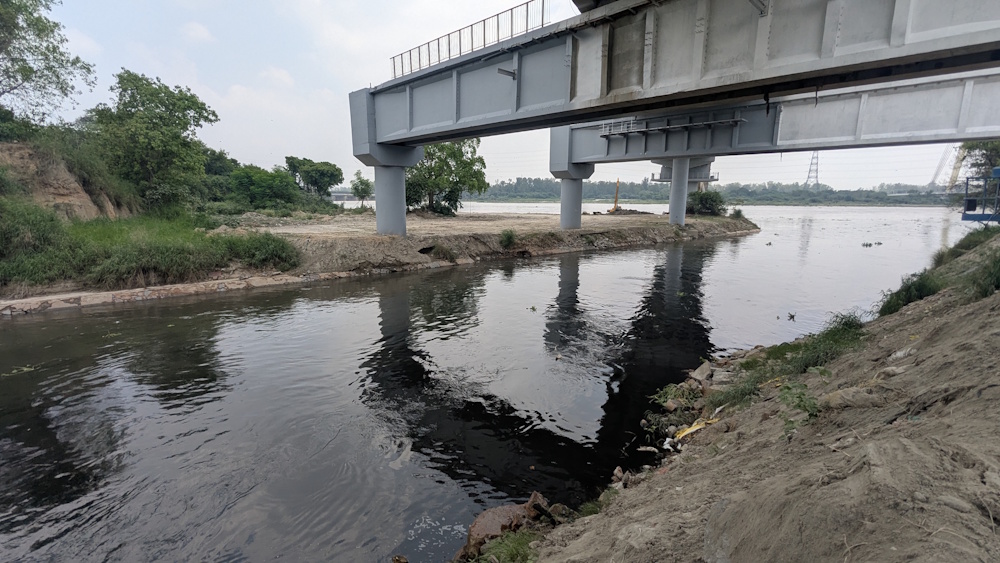

The first major sewage canal that enters the Yamuna (top) is a few metres away from the water treatment plant in Wazirabad where the river is relatively clean. Here, fishermen still catch enough to support their families but show little optimism about the Yamuna’s future. Gaurishankar, a swimming teacher, lives on the Yamuna’s riverbank at Nigambodh Ghat and removes silt regularly (bottom). When the melting glaciers have fed the Yamuna well, the water in the Yamuna is healthier, he says. “It is a relief to have such good quality water, even if for a short period,” Gaurishankar smiles, “For the rest of the year, living on the Yamuna bank is a challenge. The water is unusable and, even from a distance, the water looks dangerous.” Solid waste floats on its surface and a foul smell is permanent here.
During the COVID-19 lockdown, Gaurishankar saw aquatic life in the Yamuna but it was short-lived. “It was the first time I saw a good number of fish, tortoises, and other kinds of aquatic life. If we want Yamuna back in its glory, all we need to do is leave it alone. Stop the untreated waste and industrial discharges—Yamuna will heal itself,” he believes. Gaurishankar can see that as people move to Delhi for economic opportunities, the pressure on the river increases.
Asthi visarjan at the ghats
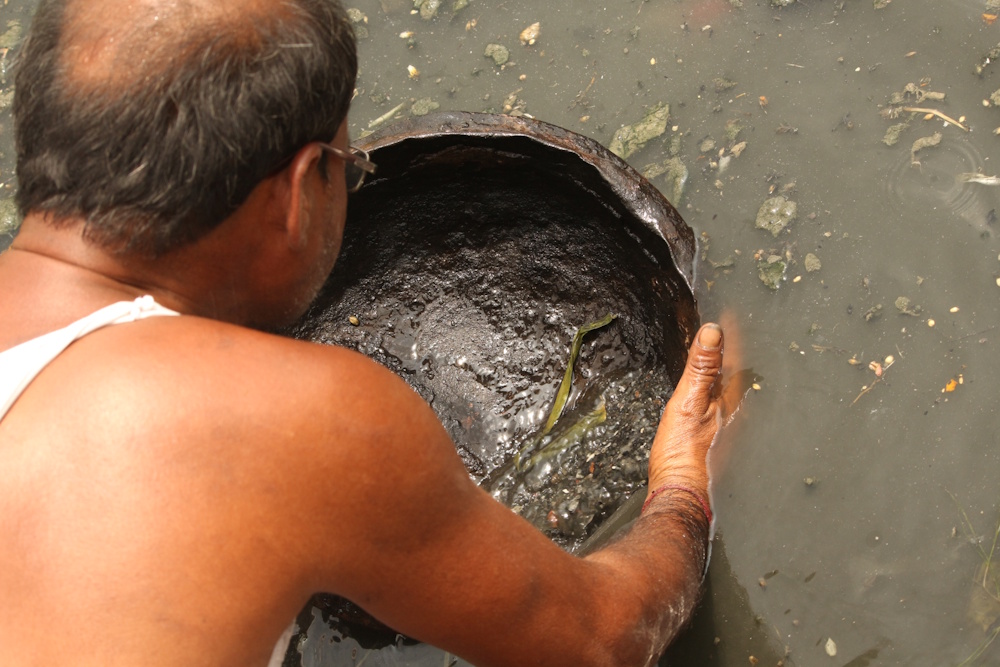
Ashok, 50, a helper in a temple at Ramghat, is at the river’s edge for most of the day. Besides helping the pandits, he collects coins and other valuables thrown into the river during asthi visarjan—the Hindu ritual of immersing the ashes of the deceased. “My day begins at 5am. After cleaning the ghat, I pull the dirt from the riverbank and examine it for valuables. Despite the claims from the government, I haven’t seen progress on cleaning the Yamuna. If the government is willing, the Yamuna can be cleaned in a year. The responsibility lies with the common people too,” Ashok says.

Ganesh, 37, a boatman at Nigambodh Ghat, offers rides to families who come for asthi visarjan. For three months of the year, the Yamuna flows at good capacity; otherwise, it is mostly sewage and discharge. “I earn Rs 1,000 a day for my family but the water quality continues to degrade. The day is not far off when people will stop visiting Yamuna,” Ganesh says, worriedly. He ferries two-three families every day and watches people litter the river with polythene and other plastic items used in ceremonies.
Waste and rag pickers of the Yamuna
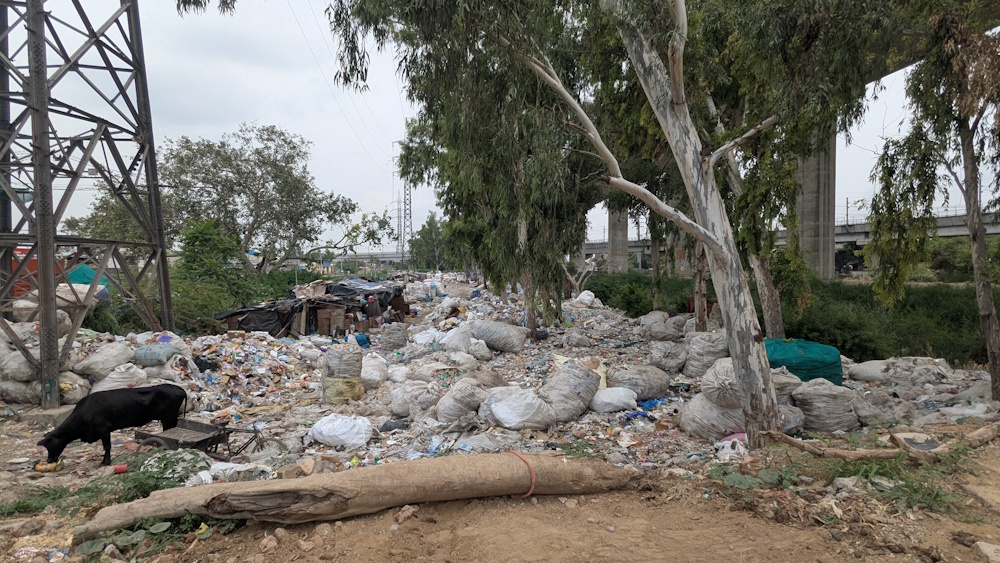
Shram Vihar, one of the areas where ragpickers dump their collection on way to its recycling, is located on one of the canals. The dumped waste is at least a part of the city’s recycling industry but the Yamuna and its banks are forced to deal with sewage and trash that cannot be recycled. As many as 17 sewage lines discharge untreated waste directly into the river raising its fecal coliform levels up to 6,400 times the safe limit. A Parliamentary report revealed that the dissolved oxygen (DO) levels, which reflect the river’s capacity to sustain life, were almost non-existent in the Delhi stretch.[4] Environmentalist Pankaj Kumar says: “The government has set an impossible goal of cleaning Yamuna to make it fit for bathing purposes. The proposals should be practical.”
To create public engagement with the rivers, the Delhi Development Authority (DDA) auctioned spaces for recreation and cafes in central Delhi’s Old Rajinder Nagar and ITO, and made a temporary market near Birsa Munda Chowk. But as environmental commentator Shailendra Yashwant wrote: “You can pour thousands of tonnes of cement to beautify its riverfront. You can build biodiversity parks and paint the ghats. You can pitch hundreds of miles of barbed wire fences to restrict access to the river. You can call the Yamuna holy and a lifeline. But as long as the focus remains on cleaning the river, and not stopping the pollution, it is not possible to clean up the Yamuna.”[5]
The infrastructure and the impact

The photograph shows one of the polluted tributaries that enters the Yamuna, in Jasola Vihar, Shaheen Bagh. Recent reports inform that 7,361 hectares out of 9,700 hectares – or 75 percent – of the Yamuna floodplains in Delhi have been encroached upon.[6] The National Green Tribual has been seized of the issue but this has had little impact on the ground.

Milan, 42, is one of the few fisherfolk still engaged in fishing in the downstream Okhla barrage. A few like him remain connected with the river but they have felt the adverse impact too. “I used to get a minimum of 15 kilos fish catch, but now, I hardly get 1-2 kilos. If the government cleans the Yamuna, the fish life will increase,” he says.

Ramkumari Devi, 86, one of the oldest residents living on the Yamuna Ghat near Kashmere Gate, has had a long relationship with the river. She remembers Yamuna carrying pristine and fresh water up to Delhi. “It might seem like a fantasy now but we used to drink water directly from the Yamuna,” she says. She remembers that the Yamuna had free land around the river until construction began mushrooming when the increased population and the lack of proper solid waste management deteriorated the river.
Riverfront ‘development’ as the way forward
In recent years, the DDA has reclaimed 90.6 hectares of floodplains.[7] The BJP-led government recently announced a 45-point action to rejuvenate the Yamuna over the next two years which includes maintaining its environmental flow, sewage and solid waste management, stormwater regulation, and floodplains restoration through demolitions.[8] The last has evoked anxiety that the drive to clean the Yamuna will see the axe fall on the poorest.
Over the years, the government’s cleaning operations on the Yamuna floodplains have been to evict slum dwellers in slum clusters like Shastri Park, Okhla, and Kashmere Gate.[9] While it’s true that many of these clusters were built in ecologically sensitive zones, it is important to note the socio-economic pressures that led to this state of affairs.
At a number of places, citizen-led initiatives to clean the Yamuna show what is possible. Pankaj Kumar and his team take up Yamuna cleaning activities[10] near Okhla barrage every week while the restoration project on Rajon ki Baoli, a 16th century stepwell in Mehrauli Archeological Park, was completed in a year.[11] A clean-up drive by volunteers, civic officials, and environmental groups collected over 100kg of waste[12] including shoes, clothes, idols and school bags across the Yamuna’s bank in Sector 94, Noida.[13]
The Yamuna Biodiversity Park, developed by the DDA, has been a breeding site for turtles, including softshell species.[14] But it is the Yamuna Riverfront Development Project, on the lines of the Sabarmati Riverfront, that’s causing concern among environmentalists. Slated for completion next year, it proposes a central piazza with seating, fountains, statues and gardens, a topiary park, a local shopping centre, two parking areas and a river promenade over 25 hectares.[15]
As with other such projects, the riverfront development is touted as a way to bring the river back into popular imagination and reconnect people with the river. But critics say the project creates more construction along the Yamuna while not addressing its core problems such as pollution. The slow death of the river is undeniable. City of Djinns, by historian William Dalrymple, shows the Yamuna flowing close to the Red Fort during the Mughal era but, today, the river flows 1.5 kilometres away from its historic ramparts. For locals like Gaurishankar, reviving the Yamuna of history is impossible but, he says, “we can conserve what’s left of it, not make it a chapter in history.”
Umer Ahmed is a freelance journalist based in Delhi. His work has been published in national and international publications. He covers the environment, human rights, and public policy.
Cover photo: Gaurishankar sitting on Yamuna Bank after cleaning the Ghat.

